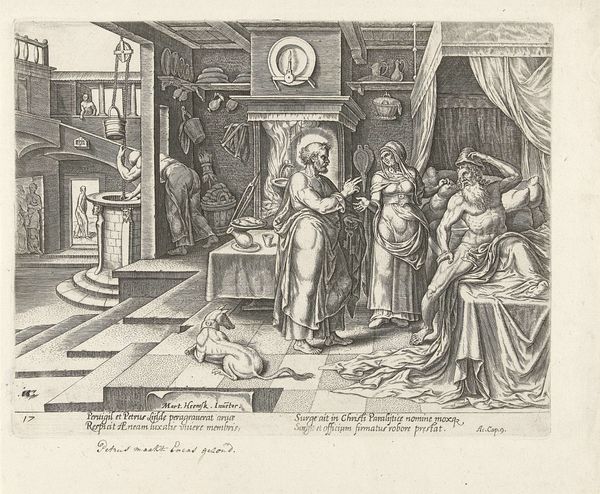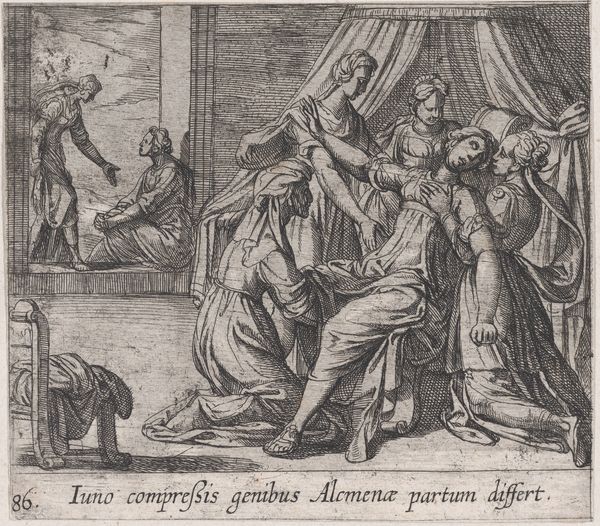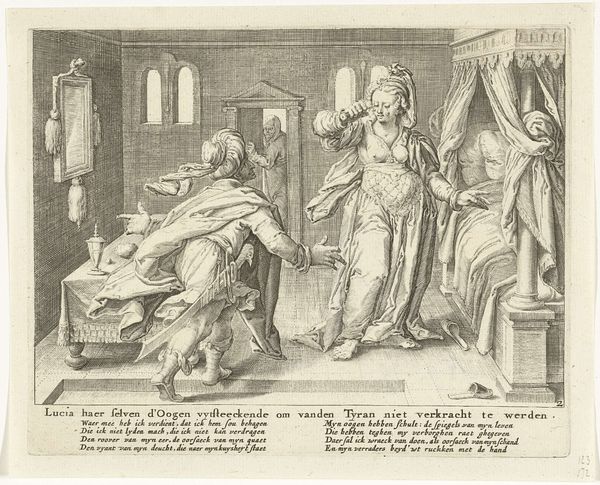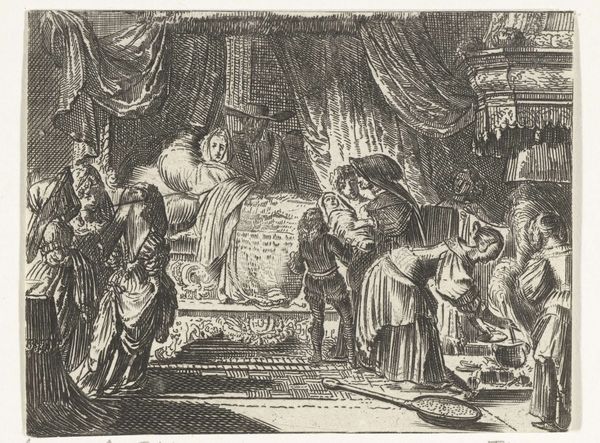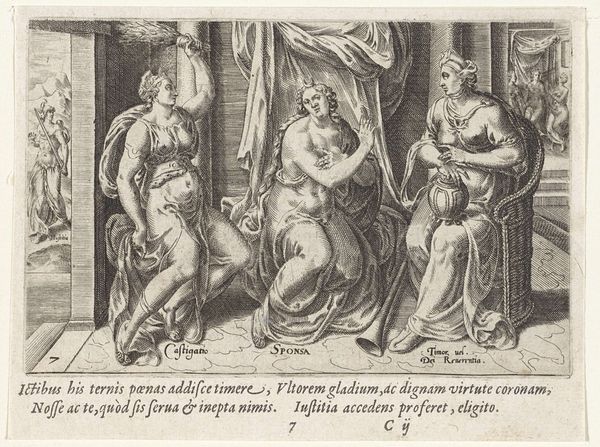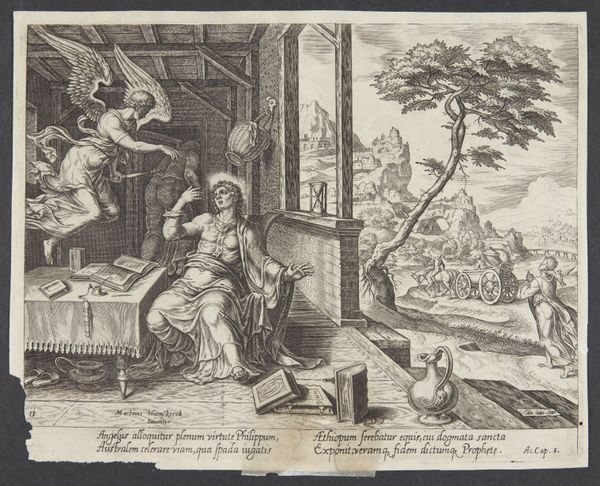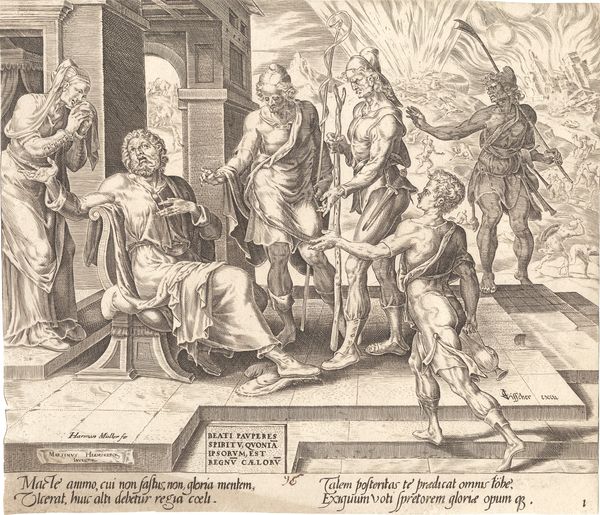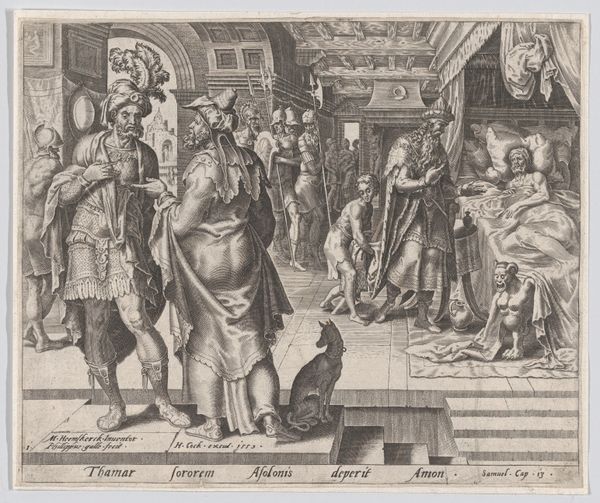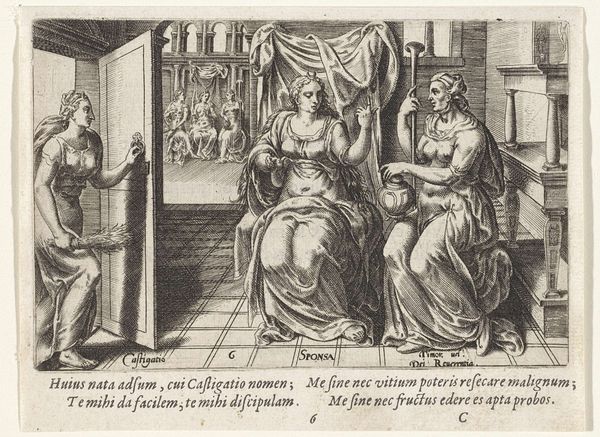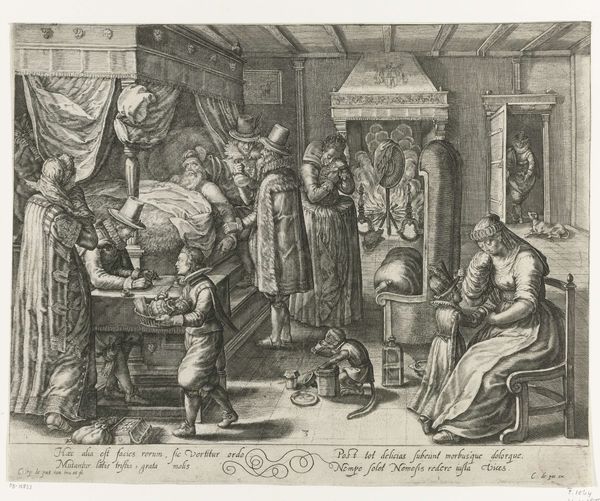
print, engraving
# print
#
mannerism
#
figuration
#
history-painting
#
engraving
Dimensions: 206 mm (height) x 245 mm (width) (bladmaal)
Editor: Harmen Jansz. Muller created this engraving, "Joseph fleeing Potiphar's wife," sometime between 1564 and 1567. It’s quite striking; the frantic energy leaps off the paper, even with the stillness inherent in the medium. I'm curious, what stands out to you most in this piece? Curator: The immediate tension certainly grabs your attention. But look closer at the *why* of it all. What symbols can you recognize from this era? Notice the somewhat theatrical poses; that's Mannerism speaking to a very specific emotional register. How do the figures' garments--or lack thereof-- contribute to this narrative and the values it reflects? Editor: I see what you mean. Potiphar's wife is reclining, almost languid, drawing attention to her nakedness, while Joseph is clothed, trying to escape. The theatrical posing is evident too - all very dramatic. Curator: Exactly! Consider this drama playing out against the backdrop of 16th-century social anxieties and moral teachings. The inscription from the Book of Deuteronomy "Thou shalt not covet thy neighbor's wife" emphasizes the religious connotations but also raises questions about desire and transgression. How are the concepts of free will and predetermined fate engaged here through symbolism? Editor: That makes me think of the figures in the background glimpsed through the open doorway...are they meant to emphasize that the story plays out in full view of judgement? Curator: An insightful reading. Symbols often function on multiple layers. The figures possibly allude to judgment or a pre-ordained destiny, subtly engaging with ongoing debates within Christianity about free will versus divine will. The domestic objects are more than decorative - what emotional weight did each carry for people viewing the image in its own time? Editor: This has really changed how I see it. It's not just a story; it's a whole cultural landscape packed into one print. Curator: Precisely. By unraveling these layers, the artwork whispers insights into the hopes, fears, and values of the era that birthed it.
Comments
No comments
Be the first to comment and join the conversation on the ultimate creative platform.


